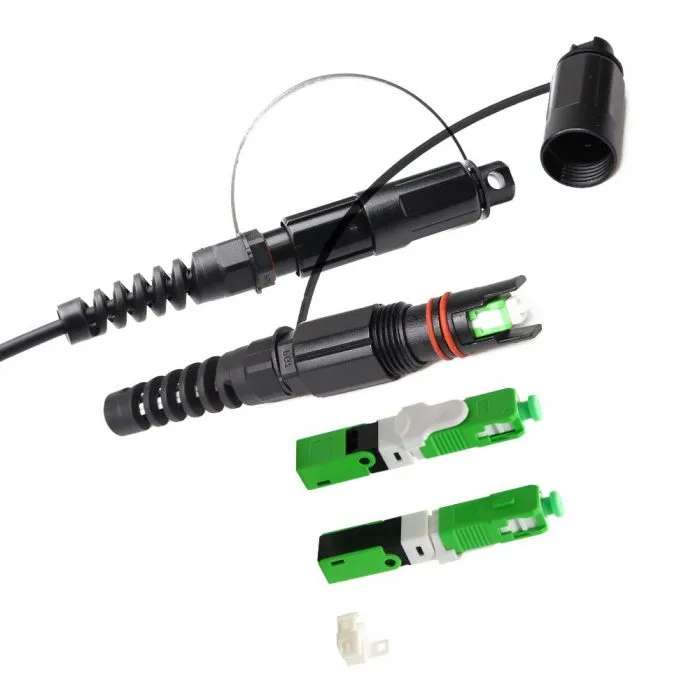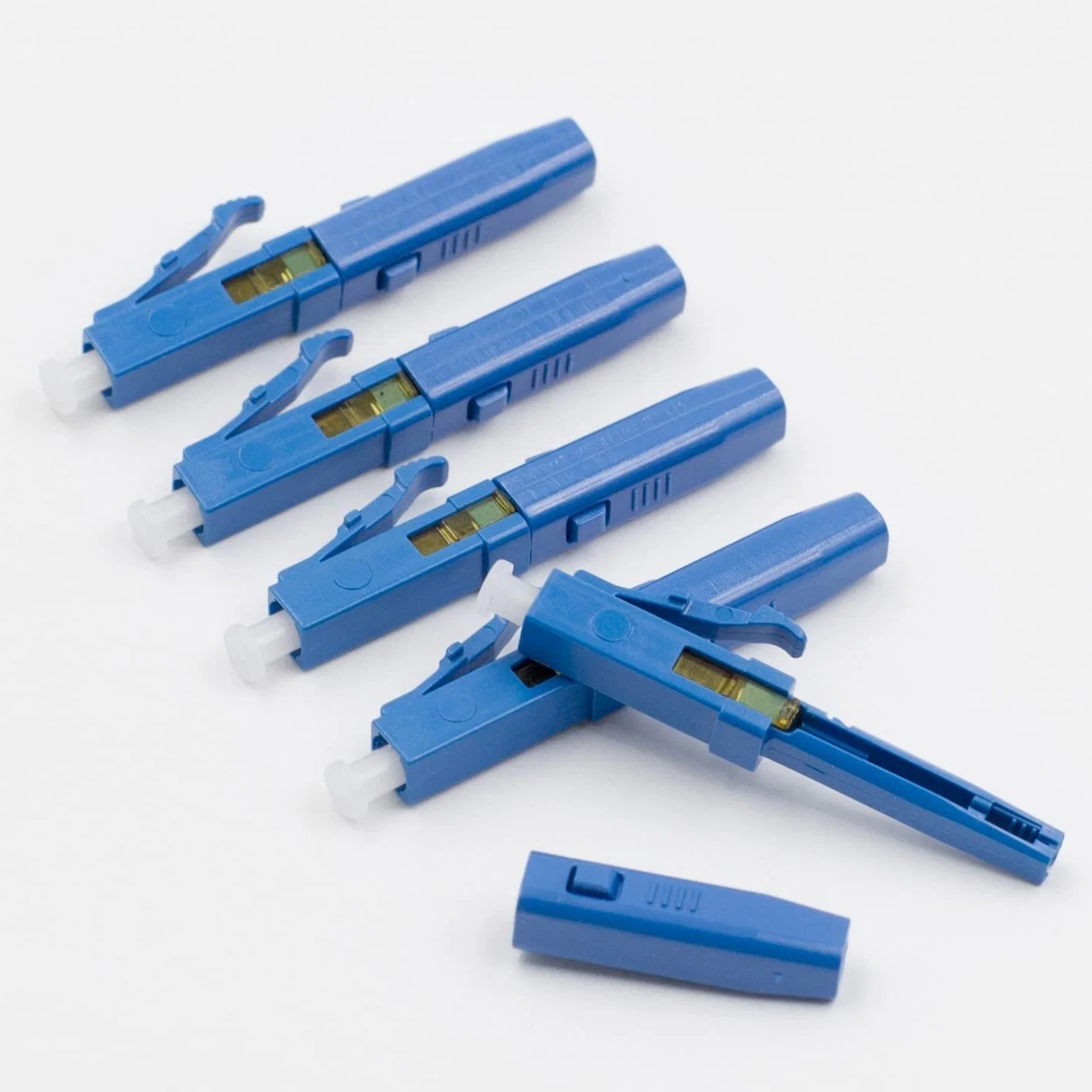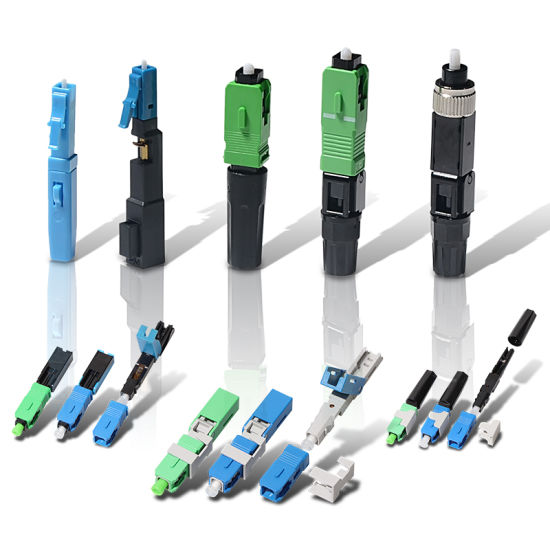Comparing Fiber Optic Connectors: SC, LC, ST, UPC, APC

Exploring Fiber Optic Connectors
In the world of fiber optic communications, different types of connectors play a crucial role in ensuring reliable and efficient data transmission. These connectors serve as the vital link between optical fibers, allowing for seamless connectivity and optimal performance. From high-speed internet connections to telecommunications networks, fiber optic connectors are essential components that facilitate the transfer of data at lightning-fast speeds.
One type of connector gaining popularity is the Fiber Optic Quick Connector. This innovative connector offers a convenient solution for terminating optical fibers without the need for epoxy or polishing. With its quick and easy installation process, it saves time and effort while maintaining excellent performance.
Fiber optic connectors come in various designs, each with its own unique features and benefits. Understanding these connectors is essential for professionals in the telecommunications industry to make informed decisions when selecting the right connector for their specific needs.
Understanding the SC Connector: Features and Benefits
The SC connector, also known as the Subscriber Connector or Standard Connector, is a widely used fiber optic connector known for its exceptional performance and reliability. Let's explore its key features and benefits.
Features of SC Connector
The SC connector boasts a compact size, making it easy to handle and install. Its simple push-pull design allows for quick and secure connections, saving valuable time during installation or maintenance. Additionally, the SC connector offers high precision alignment, ensuring low insertion loss by minimizing signal reflections.
Benefits of SC Connector
One of the significant advantages of the SC connector is its excellent repeatability and durability. It maintains consistent performance even after multiple insertions and removals, making it ideal for applications that require frequent changes or upgrades. Moreover, the robust construction of the SC connector ensures long-lasting reliability in various environments.
Another benefit is that the SC connector is well-suited for high-density applications. Its compact form factor allows for efficient use of space in patch panels or equipment racks where multiple connectors need to be accommodated. This makes it an excellent choice for data centers or telecommunications networks with limited space availability.
In summary, the SC connector offers compact size, easy installation, high precision alignment, excellent repeatability, durability, and suitability for high-density applications. These features and benefits make it a popular choice among professionals in the telecommunications industry.

The LC Connector: Compact Design and High Performance
The LC connector, also known as the Lucent Connector or Little Connector, is a popular choice for fiber optic connections due to its compact design and high performance. Let's explore the key characteristics of the LC connector in terms of its compact design and exceptional performance.
Compact Design of LC Connector
The LC connector features a smaller form factor compared to other connectors, allowing for higher port density. Its reduced size makes it an ideal choice for applications where space is limited, such as data centers or telecommunications rooms. Additionally, the compact design of the LC connector makes it easy to handle and install, simplifying the installation process and saving time.
High Performance of LC Connector
The LC connector offers excellent performance in terms of low insertion loss and high return loss. With minimal signal loss during transmission, it ensures reliable data transfer over long distances. Moreover, the LC connector is suitable for both single-mode and multimode fibers, making it versatile for various network configurations.
The combination of its compact design and high performance makes the LC connector a preferred choice in many applications. Its small size allows for efficient use of space while delivering reliable connectivity. Whether you're working with single-mode or multimode fibers, the LC connector provides optimal performance with minimal signal degradation.
Exploring the ST Connector: Durability and Widespread Use
The ST connector, also known as the Straight Tip Connector or Set and Twist Connector, is a widely used fiber optic connector known for its durability and widespread use in telecommunications and networking. Let's delve into the key aspects of the ST connector, including its durability and extensive application.
Durability of ST Connector
The ST connector is renowned for its robust construction, making it highly durable even in harsh environments. Its sturdy design ensures resistance to mechanical stress, vibrations, and temperature fluctuations. This durability makes the ST connector suitable for various applications where reliability is crucial. Additionally, the long-lasting performance of the ST connector ensures consistent connectivity over an extended period.
Widespread Use of ST Connector
The ST connector has found widespread use in telecommunications and networking industries due to its compatibility with both single-mode and multimode fibers. It is commonly employed in local area networks (LANs), wide area networks (WANs), fiber-to-the-home (FTTH) installations, and other network infrastructures. The versatility of the ST connector allows for seamless integration into existing systems without requiring significant modifications.
Furthermore, the popularity of the ST connector can be attributed to its ease of termination and installation. Its simple push-and-twist mechanism enables quick connections while ensuring secure mating between fibers.
In summary, the ST connector stands out for its durability, making it suitable for challenging environments, as well as its widespread use in telecommunications and networking applications. Its compatibility with both single-mode and multimode fibers adds to its versatility, making it a preferred choice among professionals in the industry.

Choosing the Right Fiber Optic Connector for Your Needs
By understanding the features, benefits, and applications of SC, LC, ST, UPC, and APC connectors, you can make an informed decision when selecting the right fiber optic connector for your specific needs. Each connector has its own unique characteristics that cater to different requirements in terms of size, performance, and compatibility. Whether you prioritize compact design, high density, durability, or versatility, there is a connector that suits your preferences. Consider factors such as the environment in which the connector will be used, the type of fibers being connected (single-mode or multimode), and the specific application requirements. With this knowledge at hand, you can confidently choose the perfect fiber optic connector for seamless and reliable data transmission.
See Also
Exploring the Applications of LC SC Duplex Fiber Optic Adapters
Exploring Fiber Optic Cable Types: Single-mode vs. Multi-mode
Understanding Different Types of Fiber Optic Adapters: A Comprehensive Guide
About US
Follow Us
AnetFiber company's main products are indoor and outdoor optical fiber cables, outdoor waterproof pre-connected fiber-to-the-home products, PLC optical fiber splitters, optical fiber jumpers and pigtails, MTP®/MPO high-density big data product solutions, optical fiber field quick connectors and research and development molding, injection molding and production of optical fiber distribution boxes, optical fiber chassis cabinets, the market has expanded to the world, Europe, America, Asia, the Middle East and Latin America.
Address
Shenzhen City, Baoan District, Yanluo Street, Tangxiayong Community, Yangyong Industrial Road, Tonggangda New Energy Vehicle Park 406
Contacts
+86 199 2655 3586

